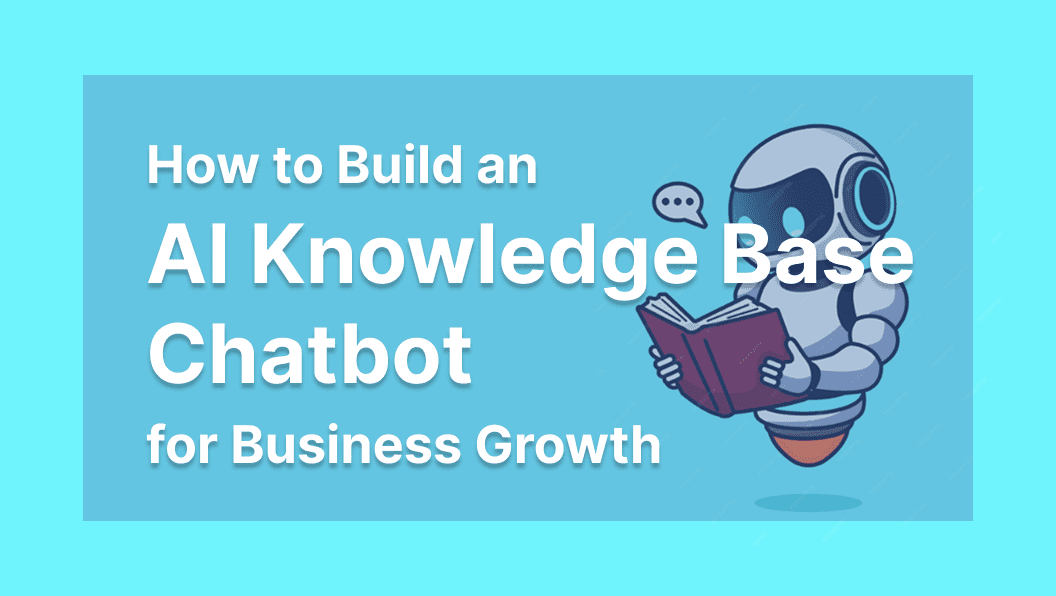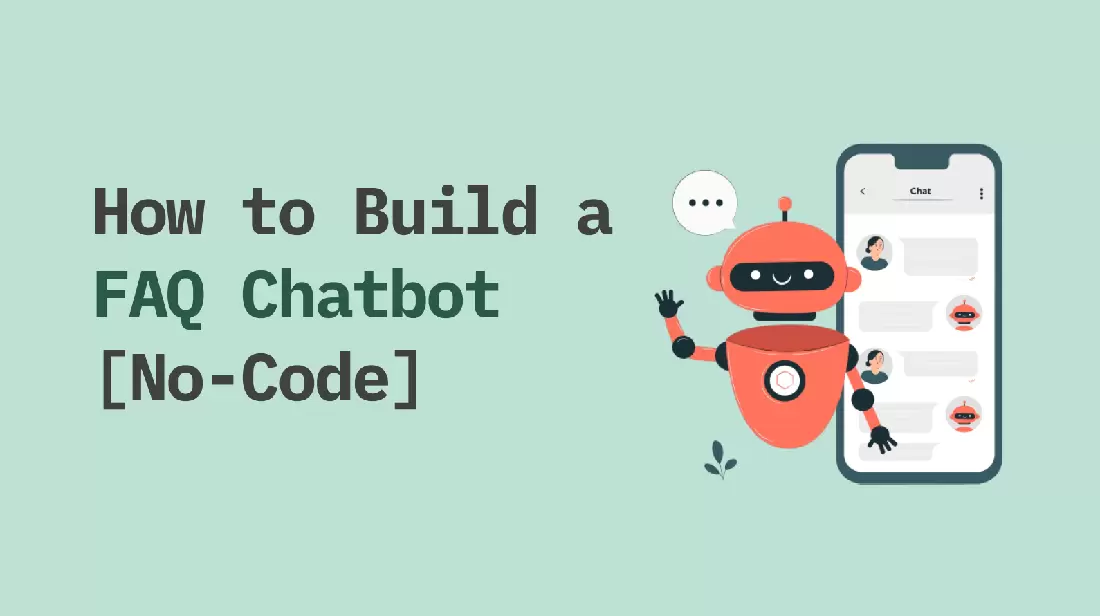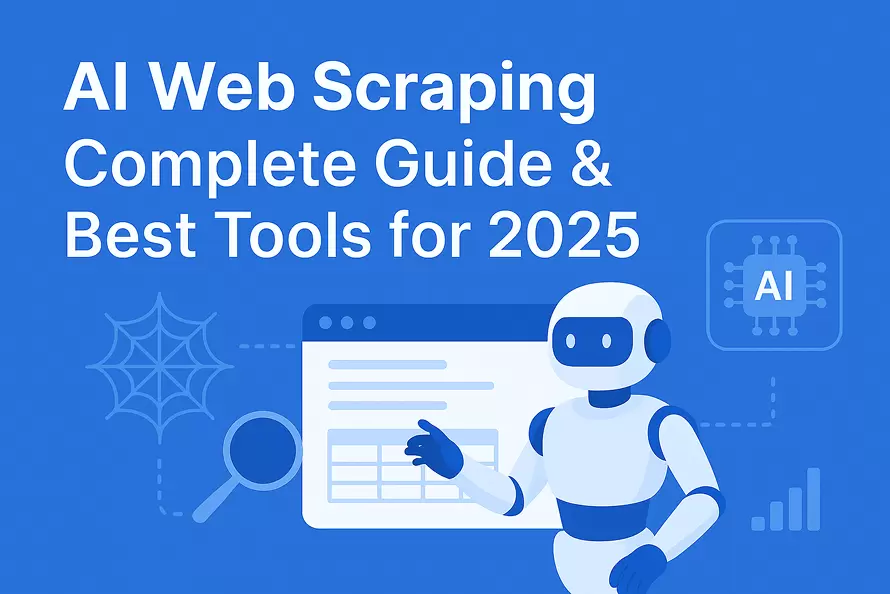If we call manual research outdated, it won't be wrong in the AI era we are living in. Manual research requires tedious efforts and time to gather, arrange, analyze, and extract useful insights from data.
Data professionals waste up to 50% of their time each week, including an average of 14 hours in data searching and another 10 hours recreating existing information assets. For marketers, the burden is equally heavy, as 71% feel overwhelmed by data, and 69% say it distracts from their core duties.
What if we told you that 90% of the time spent on manual research can now be reduced to just 10 minutes? That's where the magic of ChatGPT Deep Research begins.
ChatGPT Deep Research is redefining how B2B organizations approach knowledge work. Unlike the typical web search that ChatGPT performs, "Deep Research" goes beyond surface-level answers. It conducts in-depth and multi-step research to provide you with the most authentic information.

ChatGPT Deep Research is a game-changer for B2B enterprises. It reduces labor hours, eliminates redundant tasks, and provides real-time, authentic insights. Eventually, businesses are able to unlock the full value of data and innovate faster with smarter decision-making.
What is ChatGPT Deep Research?
ChatGPT Deep Research is an autonomous, multi-step analysis feature that processes text, visuals, and data to generate detailed and citation-rich reports. When you give it a prompt, it will find, analyze, and synthesize hundreds of online sources to generate a detailed report like a human research analyst.
The technology behind Deep Research is OpenAI's advanced o3 reasoning model, which is optimized for web browsing and data analysis. For example, if your team wants to detect market trends, it will identify emerging consumer behaviors by scanning industry reports, news, and online forums.

ChatGPT Deep Research differs from the standard ChatGPT web search. It goes beyond surface-level answers by conducting multi-step and in-depth investigations from all the possible online sources. Its reports can span thousands of words and take about 5 to 30 minutes to generate.
GPT Deep Research helps facilitate all types of business research activities. You can use it for competitive analysis, new market research, content strategy optimization, campaign ideation, and more.
How Does ChatGPT Deep Research Work?
ChatGPT Deep research is based on a multi-step process, where each stage builds on the previous one to deliver in-depth and well-structured results. The key steps are as follows:

1. Query Decomposition
After the user has specified the query, the AI agent breaks down the query into smaller sub-questions. The decomposition enables the AI to tackle complex topics step-by-step, rather than conducting a single, broad search. This makes research more focused and accurate.
2. Agentic Browsing
Next, the AI agent browses the web and gathers relevant data from hundreds of sources, including PDFs, websites, images, and reports. Its search strategy is adaptive, i.e., it dynamically changes the search parameters based on the findings. This agentic browsing enables the AI to pivot to new lines of inquiry or delve deeper into promising sources without user input.
3. Critical Synthesis
Once the AI agent has gathered the data, it begins the analysis and synthesis stage. It compares multiple points of view and cross-references facts. It also evaluates the reliability of each source. This approach ensures that the output is not just a surface-level summary but a well-supported and evidence-based report.
4. Structured Output
After synthesizing the data, the AI agent generates a complete and cited report. The report will include summaries, tables, images, and all the other necessary information. You will be able to verify sources and understand the reasoning behind each conclusion quickly.
5. Iterative Refinement
The AI agent keeps refining its approach with new data. If it suspects gaps/inconsistencies or new information emerges, it revisits the earlier steps and updates its data. This looped improvement process enhances the depth and accuracy of the final report.
Key Differentiator for ChatGPT Deep Research
As mentioned above, ChatGPT Deep Research is significantly different from traditional ChatGPT web search. The key differentiators include:
- Web Search Approach: It performs deeper web searches and multi-step investigations to deliver more comprehensive and accurate reports.
- Source Transparency: It provides full inline citations and source links, which makes it easy for users to verify sources.
- Reduced Hallucinations: Its reasoning models and autonomous browsing reduce hallucination risks.
- Analyst-Grade Output: Its reports are well-structured and coherent, easy to use for professional and actionable intelligence.
- Dynamic Adaptability: If a sub-question leads to more relevant insights, the agent adjusts its course in real time
Overall, Deep Research is the next generation of web research and reporting in ChatGPT that offers authentic and evidence-based insights for businesses.
ChatGPT vs. Competitors: Where Deep Research Excels
ChatGPT for business is not the only AI agent with deep research capabilities. All top-tier AI tools now offer similar features to automate complex research tasks. This raises the question of which AI tool provides the best deep research functionality.

The comparison table below compares ChatGPT with other competitors in terms of deep research capabilities:
| Feature | ChatGPT Deep Research | Gemini | Perplexity | DeepSeek |
|---|---|---|---|---|
| Strengths | Niche analysis, iterative depth, multimodal capabilities, detailed reports with citations | Google ecosystem integration, advanced reasoning | Speed, free tier, source transparency, rapid multi-source synthesis | Open-source foundation |
| Output Style | Analyst-style reports | Broad summaries | Concise, source-heavy | Human-like responses, outlines, and content drafts |
| Follow-up Depth | Strong – retains context across threads | Weak – resets often, shallow follow-ups | Moderate – thread-aware but limited memory | Basic – mostly single-shot queries |
| Customization | High – can guide tone, depth, formatting | Low – mostly preset | Moderate – some control via prompt style | Low |
| Speed | ~8-20 minutes | ~1-2 minutes | Under 1 minute | ~2-4 minutes |
| Limitations | Occasional inaccuracies | Early stage | Can miss key details | Less focused on fact-checking |
B2B Verdict: Many researchers have tested ChatGPT Deep Research with other competitors and found it to be the best for this job. Although GPT takes longer to research, its answers are more well-written, in-depth in knowledge, and interesting to read.
Overall, GPT Deep Research wins for depth, especially in "needle in a haystack" searches where precision and content matter most. The rest of the tools suit lightweight tasks.
 Note
Note
Note: Want to integrate all the above LLMs based on your business needs? GPTBots lets you create customized AI agents for enterprises with switchable LLMs. For example, you can integrate ChatGPT for in-depth research tasks, Perplexity for quick fact-checking, Gemini for content writing, etc.
Try out GPTBots now to make the best use of modern LLMs.
How to Use ChatGPT Deep Research: Enterprise AI Agent Workflows
There are three ways to use ChatGPT Deep Research. You can use it directly with ChatGPT, integrate Deep Research API into your workflows, or use GPTBots AI to create an enterprise AI agent with deep research capabilities.
Let's go through each way and learn how to use ChatGPT Deep Research:
Method 1# Directly from ChatGPT
ChatGPT provides a built-in option to switch to "Deep Research" mode, write the prompt, and get the detailed report within minutes. The steps are:
Step 1. Go to ChatGPT.com.
Step 2. Click "Tools" and select "Run deep research".
Step 3. Enter the prompt and hit Enter.

Wait for a few minutes for the deep research to do its job. Once done, you will get a comprehensive report on your specified topic.
Method 2# Using GPTBots to Create Enterprise AI Agents
There is now a need for advanced AI agents to handle specific tasks, like customer service, lead generation/qualification, data analytics, enterprise search, and more. Some organizations want their AI agents to have ChatGPT Deep Research capabilities baked in. This will enable them to perform real-time analysis, answer complex customer queries, and deliver internal reports. That's where GPTBots steps in.
GPTBots is a SaaS platform to build end-to-end AI solutions for enterprises without coding. It provides a visual builder and expert guidance to help businesses build AI agents for customer service, marketing campaigns, data analysis, and more.

The unique aspect of GPTBots is its multi-LLM orchestration feature, which allows a single AI agent to switch between AI models, such as ChatGPT, DeepSeek, Claude, Llama, and others, based on task requirements.
Assume that you are building a "B2B Market Intelligence Agent" for your marketing team. The way GPTBots can empower the agent to use multiple LLMs is as follows:
- Starts with ChatGPT Deep Research to gather and synthesize detailed market reports from live web data, including citations from recent whitepapers, news, and financial filings.
- Switches to Claude for summarizing long PDFs or dense research reports due to its strength in handling lengthy context windows.
- Uses DeepSeek to analyze region-specific sources and translate local news into business-ready insights.
This way, GPTBots delivers a powerful AI agent that can handle complex tasks with the intelligence of all the popular LLMs.
Feel impressed? Check out the below intuitive steps to build an AI agent with GPTBots:
Step 1. Go to GPTBots.ai and create an account. From the main dashboard, click "New Agent" and begin creating the agent from scratch or use pre-designed templates. You can use the visual builder to design the flow or get expert guidance.

Step 2. Once the AI agent workflow is designed, click the "Integration" tab from the left panel and select the platforms where you want to integrate the AI agent.

That's how intuitively you can create and deploy enterprise chatbots with GPTBots. So, head to GPTBots' website and get your first intelligent agent right away.
Method 3# Integrating Deep Research API
Recently, OpenAI has introduced the Deep Research API, which helps businesses automate complex research workflows. It takes a high-level query and generates a cited report. Click here to learn the steps on how to integrate the Deep Research API.
ChatGPT Deep Research Pricing (Free to $200/Month)
ChatGPT Deep Research seems to be the ideal virtual and super-intelligent research assistant we need. But wait! How much is Deep Research in ChatGPT cost?
Deep Research feature is available to both free and paid users of ChatGPT, but there are limits you need to know:
- Free Plan ($0/month): Get 5 lightweight Deep Research searches per month.
- Plus Plan ($20/month): Get 10 queries with full-fledged Deep Research and 15 queries with a lightweight version per month.
- Team Plan ($25/month): Get 10 queries with full-fledged Deep Research and 15 queries with a lightweight version per month.
- Pro Plan ($200/month): Get 125 queries with full-fledged Deep Research and 125 queries with a lightweight version per month.

Looking at the above pricing, a question arises that is ChatGPT DeepResearch really worth the $200?
The $200 monthly tag is only for users who require extensive and frequent research tasks. Moreover, when you are paying $200/month, you will get a lot more than just ChatGPT deep search. You will get:
- Unlimited access to GPT-4o and all reasoning models
- Access to research previews of GPT-4.5 and Operator
- Access to o1 Pro mode
- Extended access to Sora video generation
- And much more.
Considering the above offerings under the ChatGPT Pro plan, paying $200/month is worth it. However, it mainly depends on how extensively you want to use ChatGPT. Otherwise, the Team plan is also enough for many marketing teams.
How Much is DeepSeek to Use?
The release of DeepSeek (R1) sent shockwaves in the AI world due to its "open-source" reasoning model. It was performing better than many proprietary models at that time.
Besides that, when ChatGPT charges users high fees, DeepSeek offers everything for free. Users can access DeepSeek R1 and conduct in-depth research without any limits or subscription fees. On top of that, pricing for DeepSeek-R1's API is token-based and significantly more affordable than comparable AI models.
Although DeepSeek seems attractive compared to ChatGPT Deep Research, its answers are more technical and fact-focused. It lacks the natural language fluency and contextual understanding that ChatGPT provides.
DeepSeek deep research is helpful for specialized tasks like coding, math, and logical reasoning, while ChatGPT fits perfectly in almost all general-purpose corporate use cases.
Conclusion
For the past few years, manual research processes and data overload have hindered marketing teams from reaching their full potential. However, things are changing with the emerging "Deep Research" technologies.
ChatGPT Deep Research is becoming an ideal alternative to traditional research workflows and empowering teams to win with faster and more accurate access to the right data.
Now it's up to you to decide how you want to leverage ChatGPT deep AI. One way is to get a subscription to ChatGPT and start doing deep research. But how about using GPTBots instead, which helps you access all the LLMs in one place? You can use GPTBots to create intelligent AI agents for specific tasks with switchable AI models.
Start building your AI research agent today with GPTBots and unlock more flexibility and performance for your teams.
Get a Custom Demo






